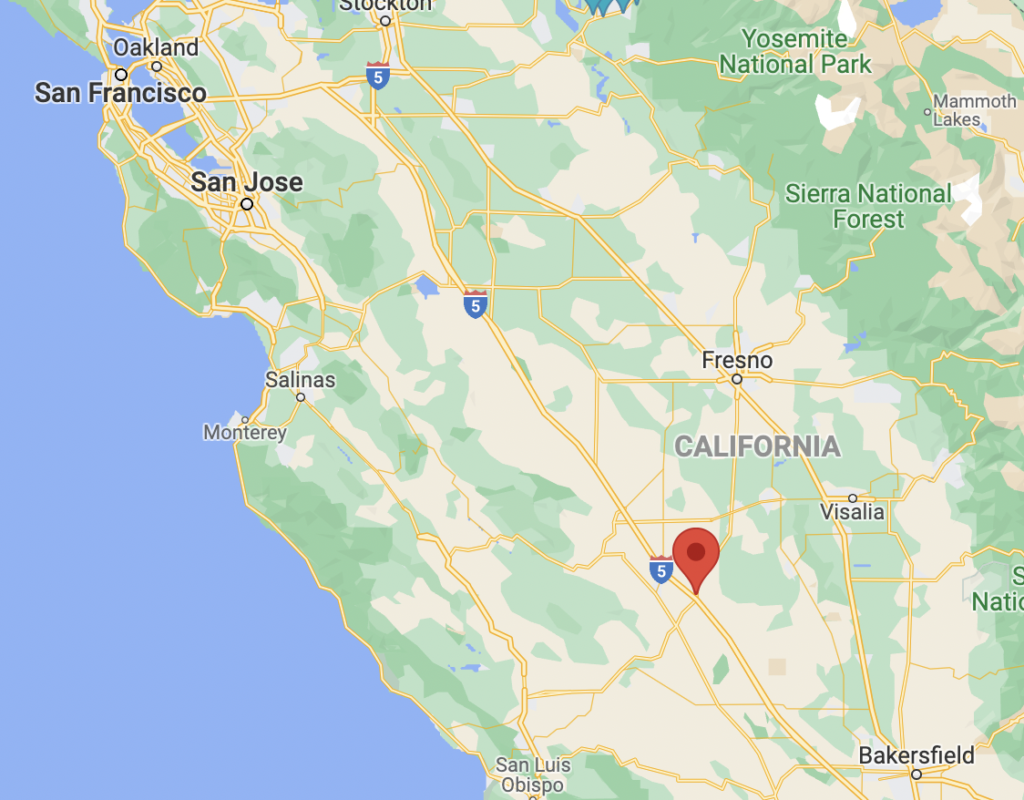Kettleman City, a popular stop for travelers on Interstate 5 with its host of gas stations and fast food joints, is on the brink of going dry. If that happens, those businesses could shut down.
Lawmakers and others are trying to work out a fix but so far, things are moving slowly.
“If they don’t work it out, it’ll be a ghost town,” said Bob Lewis, who works for Mike Jackson Farms, which owns Bravo Farms, one of the major food outlets in Kettleman City. “It’s just a matter of life and death for Kettleman City. It’s as simple as that.”
Ironically, the town sits in the shadow of the California Aqueduct, which carries massive amounts of water from the Sacramento-San Joaquin Delta south to farms and cities as far away as Los Angeles through the State Water Project, which is managed by the Department of Water Resources (DWR).
But Kettleman City only receives about 900 acre feet of that state water a year under a Kings County contract through the Tulare Lake Basin Water Storage District, a state water contractor.
This year, because of the extreme drought, state water contractors were cut back to 5% of their contracted supplies, which works out to only 45 acre feet for Kettleman City. The town needs a minimum of 300 acre feet a year to survive. It had another 245 acre feet stored in San Luis Reservoir that it carried over to this year. But it’s still not enough and the town is on track to go dry by December.
“Kettleman’s just gone through so much,” said Justin Mendes, regulatory specialist at Tulare Lake Basin Water Storage District. “Now here we are in October of 2021 about to run out of water.”
Before 2019, the town relied on groundwater. But it was plagued by arsenic contamination. In 2019, after a 10-year-long process, a state and federally funded $11 million surface water treatment plant was built, allowing the town to switch to surface water. Since then, both of the town’s groundwater wells have failed and are beyond repair.
The town is eligible for the state’s Emergency Health and Safety water which comes out to about eight acre feet per month. But that won’t be enough to cover the community’s needs.
Kettleman City’s needs are a relatively small amount in the grand scheme of things, said Mendes. But he said he’s never seen the district have to work so hard for such a small allocation. The district is in constant contact with the county and Kettleman City’s engineers to keep an eye on the situation.
Water conservation measures are in place in Kettleman City, but there isn’t much else residents can do to save water, said Brian Skaggs, district engineer for Kettleman City. Most cities cut back on water usage from watering lawns and landscaped areas. But Kettleman City doesn’t have much landscaping anywhere, said Skaggs.
“It’s hard to even tighten the belt more when you don’t have anything else to tighten with,” said Skaggs. “We’re hoping DWR will give us the additional water to get by next year.”
If additional water doesn’t come through, the businesses and economy of Kettleman City will be severely impacted, said Skaggs. The whole commercial portion of town could close down, he added. About 40% of Kettleman City’s water usage goes to the commercial area off the highway.
On October 1, State Senator Melissa Hurtado (D-Sanger) and Assemblymember Rudy Salas (D-Bakersfield) sent a letter to DWR asking for additional water for the community.
“While the locality itself and the individuals that live there are working to limit their consumption, there is a component of reduction that is not entirely in their own hands,” wrote the lawmakers, referring to the amount of water used in the commercial portion of town by travelers. The letter urges DWR to approve additional water for the community to, “prevent the very real possibility of human suffering for those that call it home.”
On October 4, Edward Hill, Kings County Administrator, also sent a letter to DWR, officially petitioning the department for more water.
DWR is coordinating with the State Water Resources Control Board on a response for the community, wrote a DWR spokesperson in an email.
“Our role is limited to providing financial and technical advice to the communities,” the spokesperson wrote. “For a number of communities, we are coordinating with the Water Board to get dollars out the door for emergency drought response.”
Meanwhile, residents can’t do much more than fret.
“Twenty-four hours a day we worry about it,” said Lewis.
Share this:
- Click to share on Facebook (Opens in new window)
- Click to share on Twitter (Opens in new window)
- Click to share on LinkedIn (Opens in new window)
- Click to share on Reddit (Opens in new window)
- Click to share on Tumblr (Opens in new window)
- Click to share on Pinterest (Opens in new window)
- Click to share on Pocket (Opens in new window)
- Click to share on Telegram (Opens in new window)
- Click to share on WhatsApp (Opens in new window)
- Click to print (Opens in new window)








